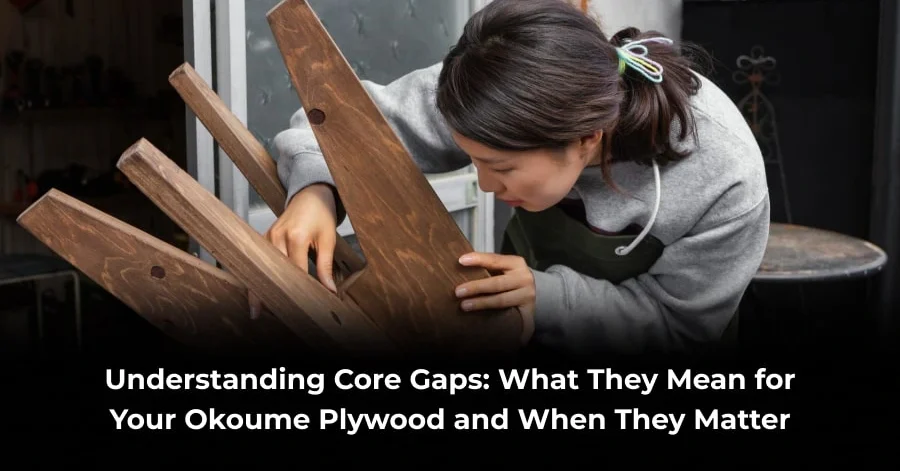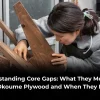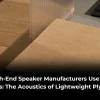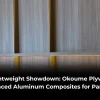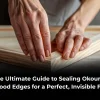When working on any professional woodworking or marine project, Okoume Plywood is one of the most preferred materials due to its durability, lightweight nature, and smooth finishing surface. However, one term often confuses buyers — core gaps. Whether you’re purchasing panels for furniture, boats, cabinetry, or decorative interior applications, understanding these gaps inside the plywood can save you money, time, and long-term repair hassles.
This detailed guide explains what core gaps are, why they form, how they affect Okoume Plywood and okoume marine plywood, and when you should be concerned about them. If you’re buying from any woodworking supplies store, knowing this can help you make the best purchasing decision.
What Are Core Gaps in Plywood?
Core gaps are empty spaces or voids found between the inner layers (veneers) of plywood. These voids are created when the inner sheets do not bond perfectly, either due to manufacturing inconsistencies, natural defects in the wood, or improper pressing pressure.
Even in premium products like Okoume Plywood, small core gaps can exist. However, the quality of the plywood depends on how well these gaps are minimized. High-grade plywood — especially okoume marine plywood — aims for near-zero gaps because the inner structure needs to be strong, even, and water-resistant.
When you walk into a woodworking supplies store, you may notice different price ranges of the same plywood category. One major factor behind this variation is the amount of core gaps inside the sheets.
Why Do Core Gaps Occur in Okoume Plywood?
There are a few reasons why gaps form during manufacturing:
1. Natural Wood Characteristics
Okoume is a natural hardwood sourced from Africa. Like any natural material, it may have knots, grain inconsistencies, and density variations that can lead to imperfect bonding.
2. Veneer Overlaps or Gaps
During production of Okoume Plywood, if the inner veneers do not align well or overlap excessively, they may create hollow areas that turn into voids later.
3. Inadequate Pressure During Pressing
When layers are not pressed evenly or with sufficient pressure, bonding becomes weak, causing uneven surfaces or internal pockets.
4. Low-Quality Adhesive Application
Marine-grade sheets like okoume marine plywood require superior adhesive and uniform coating. Poor glue distribution easily leads to formation of gaps.
5. Budget-Grade Manufacturing Methods
Cheaper plywood options often compromise quality by:
- Using low-density veneer
- Allowing patches or cracks
- Ignoring minor internal defects
If you buy from a low-end woodworking supplies store without checking the grade, chances are higher that the plywood may contain more core gaps.
Do Core Gaps Affect Performance?
Yes — core gaps affect performance depending on the project type. The severity varies based on the amount, size, and location of these gaps inside the Okoume Plywood.
Let’s break this down:
1. Structural Strength
Gaps reduce the panel’s ability to hold weight. Furniture, flooring, and heavy cabinetry require high strength and uniform structure. That’s why okoume marine plywood and high-grade variants are produced to have minimal gaps.
2. Fastener Grip
Screws, bolts, and nails hold better when the core is solid. When a screw hits a void, it loses grip, causing joints to loosen with time.
3. Moisture Resistance
In marine environments, any internal gap can trap water, leading to:
- Swelling
- Peeling
- Fungus
- Internal rot
This is why gap-free okoume marine plywood is crucial for boats, yachts, and outdoor furniture.
4. Surface Finishing Quality
Even though you cannot see internal gaps, they may cause:
- Warping
- Blistering
- Irregular sanding
- Uneven polishing
If your project requires a fine finish, choose high-quality sheets from a trusted woodworking supplies store that stocks premium Okoume varieties.
Signs That Your Okoume Plywood Has Core Gaps
Even without cutting open a panel, you can detect internal gaps by checking:
1. Sound Test
Tap the sheet with your knuckles. Hollow sounds usually indicate an internal void.
2. Uneven Thickness
Visible waves or thickness variations suggest poorly arranged veneers.
3. Edge Voids
Inspect the edges closely. If you notice dark spots or sudden holes, these are exposed core gaps.
4. Surface Bubbles
When gaps push against surface layers, they can cause blisters or bubbles on the surface.
5. Excessive Flexibility
If a sheet bends more than it should, internal gaps may be weakening its core.
When purchasing from any woodworking supplies store, ask the supplier whether the sheets meet marine or premium-grade standards and whether they follow strict gap-control production.
When Core Gaps in Okoume Plywood Actually Matter
Core gaps may or may not matter depending on how the plywood will be used.
1. High-Risk Situations (Gaps Matter A LOT)
These applications require the highest quality:
- Boat building and repair
- Ship interiors
- Outdoor decks
- Water tanks
- Kitchen/bathroom cabinetry
- High-load furniture
- Architectural structures
For these, always choose okoume marine plywood with certified minimal gaps.
2. Medium-Risk Situations (Gaps Matter Moderately)
- Indoor furniture
- Medium-load cabinets
- Shelving
- Partition walls
Some small gaps may be acceptable if the structural load is moderate. However, consistent quality still matters.
3. Low-Risk Situations (Gaps Are Less Critical)
- Temporary structures
- Decorative paneling
- Low-traffic areas
- Compact DIY projects
If your priority is budget over durability, slight core gaps in Okoume Plywood may not be an issue.
How to Choose Okoume Plywood with Minimum Core Gaps
When buying through a woodworking supplies store, use these tips:
1. Check the Grade
- Marine Grade
- Exterior Grade
- Furniture Grade
Marine grade okoume marine plywood is always the most gap-free.
2. Ask for Certification
Look for BS1088 or equivalent marine-grade certifications, ensuring strict gap-control standards.
3. Compare Weight
Higher-density panels generally have fewer gaps.
4. Inspect Edges Thoroughly
Smooth edges indicate consistent layering.
5. Choose Trusted Suppliers
The reputation of the supplier determines the consistency of the wood quality.
6. Buy from Specialists
Suppliers like AEW Woods specialize in Okoume Plywood and ensure superior manufacturing with minimal core gaps.
Conclusion
Core gaps are an essential factor to consider when selecting Okoume Plywood for any project. Whether you’re building a boat, crafting fine furniture, or completing a home renovation, understanding what these internal voids mean helps you make the right choice. High-grade, well-manufactured okoume marine plywood offers superior strength, better bonding, and maximum durability, especially for moisture-prone environments. Always inspect the plywood, verify its grade, and choose a reliable woodworking supplies store to avoid hidden issues that may compromise your project.
At the end of the day, quality matters. And if you are looking for reliable, premium, and gap-free plywood solutions, AEW Woods is one of the most trusted names in supplying high-quality Okoume products with consistent performance and long-lasting durability.
Frequently Asked Questions:
- Are core gaps normal in Okoume Plywood?
Small gaps can exist in any plywood, but high-quality and okoume marine plywood aim to keep them near zero.
- Will core gaps reduce the lifespan of the plywood?
Yes, especially in moisture-heavy applications, as gaps can trap water and cause internal rot.
- How do I check for core gaps before buying?
Tap for hollow sounds, inspect edges, and ask the woodworking supplies store about the grade and certification.
- Is okoume marine plywood completely gap-free?
Marine-grade plywood is manufactured to minimize gaps, but only certified panels guarantee minimal voids.
- Can core gaps be repaired?
Minor gaps can be filled, but structural gaps inside Okoume Plywood are irreversible and may weaken your project.

